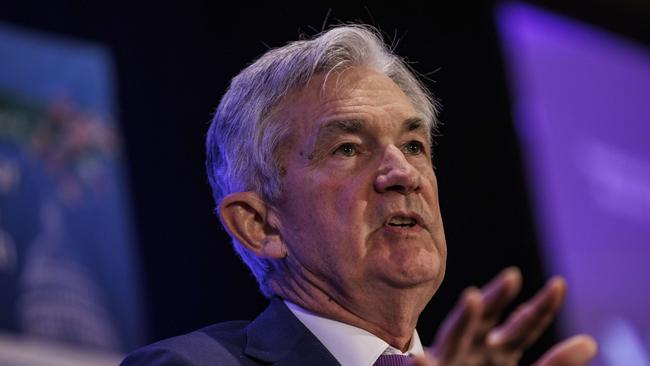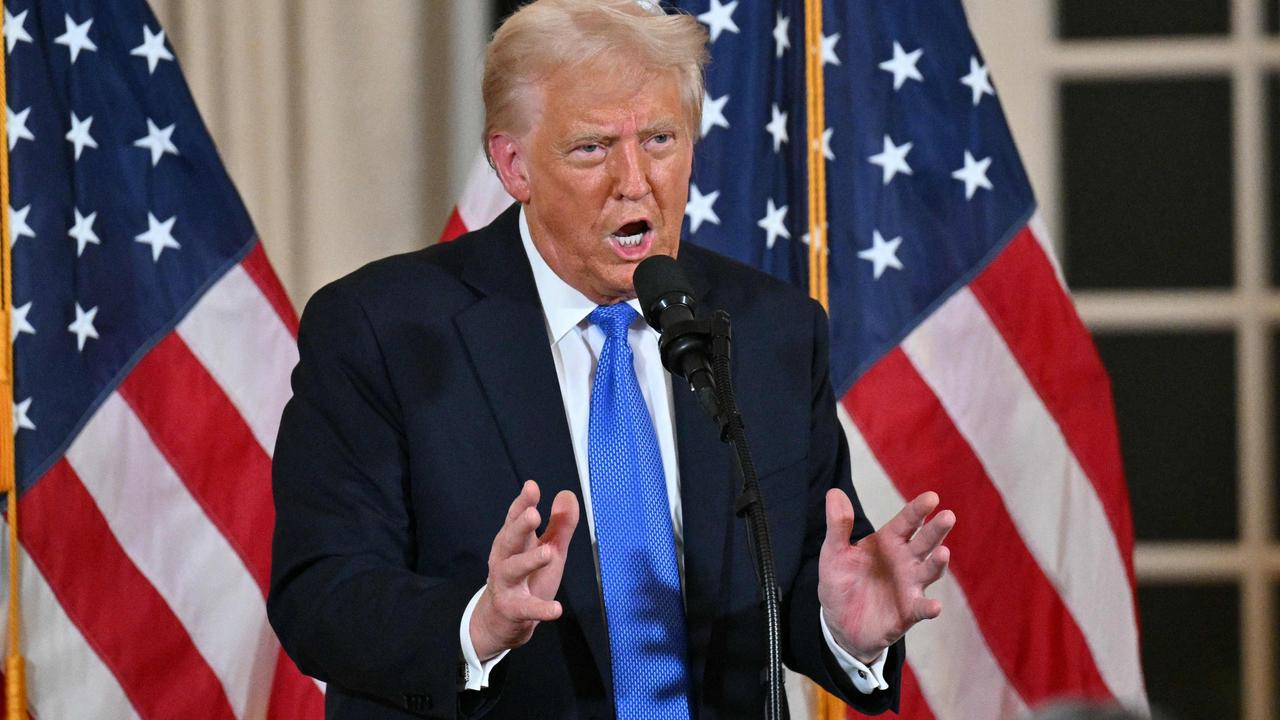Powell says Fed will consider more-aggressive interest-rate increases to reduce inflation
Bringing down inflation and avoiding recession will be a ‘challenging task,’ says Federal Reserve chair Jerome Powell.

Federal Reserve chairman Jerome Powell said the central bank was prepared to raise interest rates in half-percentage-point steps and high enough to deliberately slow the economy if it concluded such steps were warranted to bring down inflation.
“If we think it’s appropriate to raise [by a half point] at a meeting or meetings, we will do so,” Mr Powell said during a moderated discussion after a speech on Monday before the National Association for Business Economics in Washington, DCM
Mr Powell’s remarks struck a tougher tone than he used just days earlier in a press conference after the Fed voted to raise its benchmark rate by a quarter point, and he signalled a stronger bias toward lifting rates until the central bank sees clear evidence that inflation is falling to its 2 per cent target.
The Fed lifted the rate from near zero to a range between 0.25 per cent and 0.5 per cent last week, and officials pencilled in a series of additional increases raising it to slightly below 2 per cent at the end of this year and to around 2.75 per cent next year.
Mr Powell repeatedly stressed the uncertainty facing Fed officials as they navigate the after-effects of the Covid-19 pandemic and the recent war in Ukraine, and he said they are ready to shift their policy in a more disruptive direction.
“If we determine that we need to tighten beyond common measures of neutral and into a more restrictive stance, we will do that as well,” said Mr Powell. Most Fed officials believe a neutral rate is near 2.5 per cent, assuming annual inflation is 2 per cent.
Stocks and bonds fell as Mr Powell spoke. The Dow Jones Industrial Average closed down 0.58 per cent on Monday. The yield on the benchmark 10-year Treasury note rose to 2.298 per cent in afternoon trading, as yields rise when bond prices fall.
“Powell really stepped out here and detailed a lot of serious concerns about inflation in the context of a job market that is arguably overheating,” said Tim Duy, chief economist at research firm SGH Macro Advisors.
Compared with Mr Powell’s press conference last week, at which he was speaking on behalf of the central bank’s rate-setting committee, “this was even more explicit, and probably more reflective of his own views.” Some critics say the Fed is being forced to aggressively raise interest rates now because officials waited too long last year to withdraw stimulus.
At last week’s Fed meeting, St Louis Fed President James Bullard dissented from the policy decision in favour of a larger half-point increase and pointed to the potential for higher inflation to lead inflation-adjusted interest rates to decline, even as the Fed raises nominal interest rates.
“The committee will have to move quickly to address this situation or risk losing credibility on its inflation target,” he said in a statement last week explaining his decision.
Annual inflation rose to 6.1 per cent in January, according to the Fed’s preferred gauge, according to the latest data available. Core inflation, which excludes food and energy, climbed to 5.2 per cent. Most Fed officials now see core inflation ending the year at 4.1 per cent if they raise rates to around 2 per cent this year, according to projections last week.
Mr Powell said the inflation outlook had deteriorated significantly even before Russia’s invasion of Ukraine, and he warned that the effects of the war in Europe and the West’s response to heavily sanction Russia’s economy could further aggravate supply-chain disruptions while sending up prices of key commodities used to make a range of goods.
As a sign of Mr Powell’s growing intolerance with inflation surprises, his speech was titled, “Restoring Price Stability.” In January, the Fed had expected inflation to diminish this year as supply-chain bottlenecks improved. “That story has already fallen apart, ” Mr Powell said Monday.
“To the extent it continues to fall apart, my colleagues and I may well reach the conclusion we’ll need to move more quickly. And if so, we’ll do so.”
Mr Powell contrasted the potential shock to inflation from a surge in a broad range of commodities, including energy, due to the Ukraine war with the oil-price shocks from geopolitical events in the Middle East in the 1970s. That history was “not a happy one” for the Fed, as it led to double-digit inflation, Mr Powell said.
Central bank textbooks see supply shocks’ effect on inflation as transitory so long as the public doesn’t expect permanently higher future inflation. In the 1970s, expectations weren’t as stable, and shocks in 1973 and 1979 fed into broader inflation. But according to consumer surveys and market-based measures, inflation expectations have been relatively stable since the 1990s, taking the sting out of oil shocks in 1990 and 2003.
The question is whether 2022 will be more like the shocks of the 1970s or the more recent episodes. The shock in Ukraine is “more like a classic supply shock [that] you would tend to want to look through,” Mr Powell said. But he said the Fed was less inclined to ignore the shock than it might otherwise have been because high inflation risks leading consumers’ and businesses’ expectations to rise to levels that could create a much more destabilising psychology of higher prices.
“I wouldn’t say we’re comfortable at all with the typical we’ll-just-look-through-that approach,” Mr Powell said.
The Fed’s task now is to guide inflation down by raising rates to moderate demand but not so aggressively that the economy slides into recession. Engineering such a so-called soft landing is still possible, said Mr Powell, and he pointed to three instances over the past 60 years in which he thought the Fed had achieved such an outcome.
But he added several caveats: “No one expects that bringing about a soft landing will be straightforward in the current context – very little is straightforward in the current context.” Monetary policy is a “blunt instrument, not capable of surgical precision,” Mr Powell added. “My colleagues and I will do our very best to succeed in this challenging task.”
Mr Powell’s comments about the difficulties the Fed faces underscore the growing risks of a recession from raising rates aggressively to slow inflation. Lifting borrowing costs tends to curb borrowing and spending by consumers and businesses, and in many past instances has caused unemployment to rise and economic output to fall.
The Fed is still counting on significant help from healing supply chains and a return of workers to the job market to bring inflation down this year and next. But, Mr Powell said, in contrast with the Fed’s stance through much of 2021, it could no longer set policy by forecasting that such relief would materialise.
“As we set policy, we will be looking to actual progress on these issues and not assuming significant near-term supply-side relief,” he said.
Mr Duy said those comments offered the most explicit acknowledgment about how the Fed’s urgency to raise rates has intensified in recent weeks. “They’re going to continue to hike until they see clear evidence that they can back off their inflationary concerns,” said Mr Duy. “Rather than hope inflation is going to go down, they need clear and convincing evidence that inflation is going down.”
Mr Powell also for the first time allowed for the possibility that the economy was undergoing a major shift in which many of the forces that had contributed to lower inflation over the past 25 years, including globalisation, might be fraying. Globalisation made it far more difficult for companies to raise prices, he said, and a more segmented global economy might reverse some forces that had kept prices down in recent decades.
Mr Powell said he had never found these arguments in favour of higher future inflation particularly persuasive before the pandemic, but he said it was harder to tell how the pandemic, the unusually strong policy response and the war in Ukraine would change the nature of the economy.
“No one is sitting around at the Fed … just waiting for the old regime to come back. I think people fully appreciate the situation that we’re in,” he said. “It’s a series of shocks that have happened, and we have a job to do, and we’re very focused on doing that job.”
The Wall Street Journal


